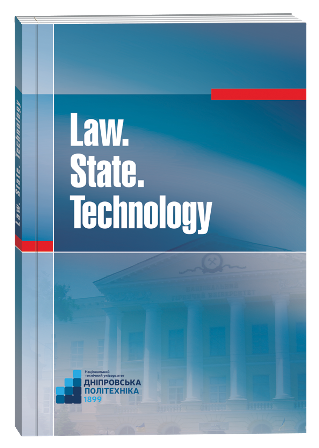ORGANIZATIONAL STAGES OF IMPLEMENTATION OF THE COMPSTAT ACCOUNTABILITY MODEL IN THE ACTIVITIES OF LAW ENFORCEMENT AGENCIES
DOI:
https://doi.org/10.32782/LST/2023-2-8Keywords:
managerial activity, model, criminal analysis, efficiency management, accountability, information technologies, CompStat meeting.Abstract
The article is devoted to the research and highlighting of the modern positive experience of the organization of management activities in law enforcement activities, which arose and was formed as an independent proactive model of activity based on the best practices of management activities borrowed from the commercial sector of public relations. It was determined that the fundamental prerequisites that became the basis of the review of the accumulated experience of the organization of management activities in the work of law enforcement agencies were in-depth essential knowledge about various aspects of the existence of crime, the availability of technological possibilitie for processing extremely large volumes of criminological data, strengthening the practice of combating crime with the latest opportunities for conducting criminal analytical research. It has been established that the main purpose of applying the CompStat accountability model is to achieve maximum efficiency in solving tactical and strategic tasks of fighting crime within the available resources of law enforcement agencies that perform their tasks in a changing operational environment. It was found that organizationally, the CompStat accountability model consists of the sequential implementation of three constituent elements: the collection and in-depth analysis of criminological data, the implementation and stage of the CompStat meeting. Critically important for the successful implementation of the CompStat model of law enforcement is the development of a modern organizational and information technology (IT) infrastructure, which involves the wide application of the capabilities of geographic information systems (GIS). The central organizational stage of the implementation of the studied model is the CompStat meeting, during which top-level managers listen to the heads of separate (local) law enforcement agencies and, based on collective experience and knowledge, jointly develop effective countermeasures (responses).
References
John A. Eterno, Eli B. Silverman. The NYPD’s CompStat: compare statistics or compose statistics? International Journal of Police Science & Management .Volume 12. Number 3. Pp. 426–449.
Vito Gennaro, John Reed, William Walsh. “Police executives' and managers' perspectives on Compstat”. Police Practice and Research. 2017. 18(1): Pp. 15–25.
Jeff Godown. “The CompStat Process: Four Principles for Managing Crime Reduction”. Police Chief Magazine Vol. LXXVI No. 8, August 2009. 4. Robert Zink. The trouble with CompStat. The PBA magazine. URL: https://web.archive.org/ web/20070427135737/http:/www.nycpba.org/publications/mag-04-summer/compstat.html (дата звернення 23.06.2023).
Paul E. O’Connell. Using Performance Data for Accountability: The New York City Police Department’s CompStat Model of Police Management. August 2001. URL: https://www.businessofgovernment.org/sites/ default/files/CompStat.pdf (дата звернення 23.06.2023).
Brenda J. Bond. Rethinking the CompStat process to enhance problem-solving responses: Insights from a randomized field experiment Journal: Police Practice and Research: An International Journal. URL: https://www.researchgate.net/publication/268529316_Rethinking_the_Compstat_process_to_enhance_problem- solving_responses_insights_from_a_randomized_field_experiment (дата звернення 23.06.2023).
Положення «Про організацію післядипломної освіти працівників Національної поліції». Затверджено Наказом Міністерства внутрішніх справ України від 24.12.2015 року № 1625. URL: https:// zakon.rada.gov.ua/laws/show/z0076-16#Text (дата звернення: 07.04.2023).
Федчак І. А. Основи кримінального аналізу : навчальний посібник. Львів : Львівський державний університет внутрішніх справ, 2021. 288 с.








